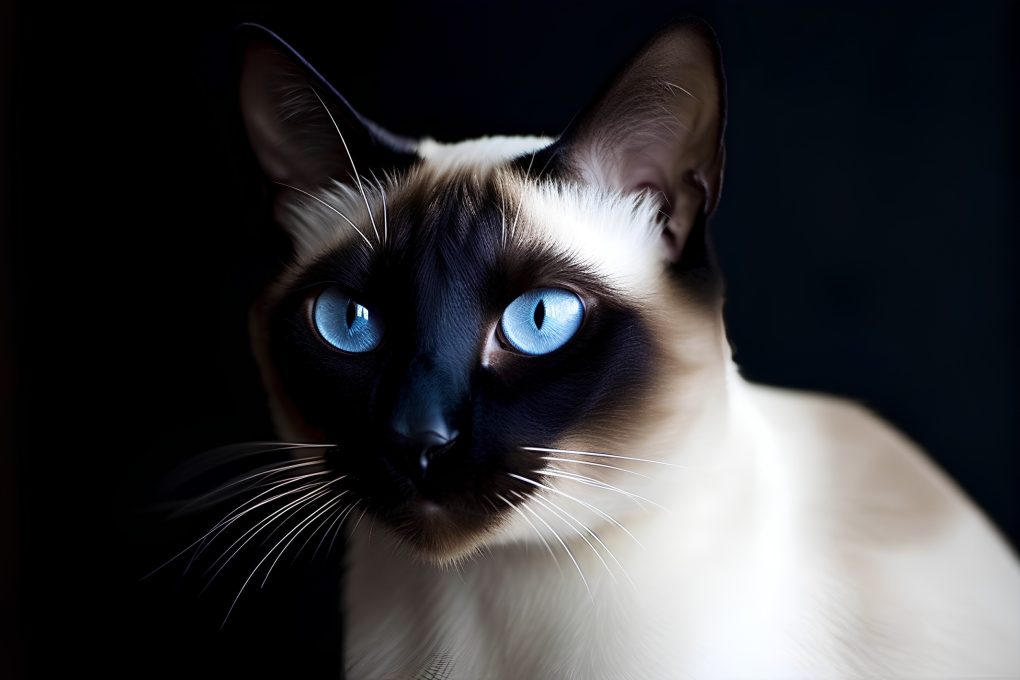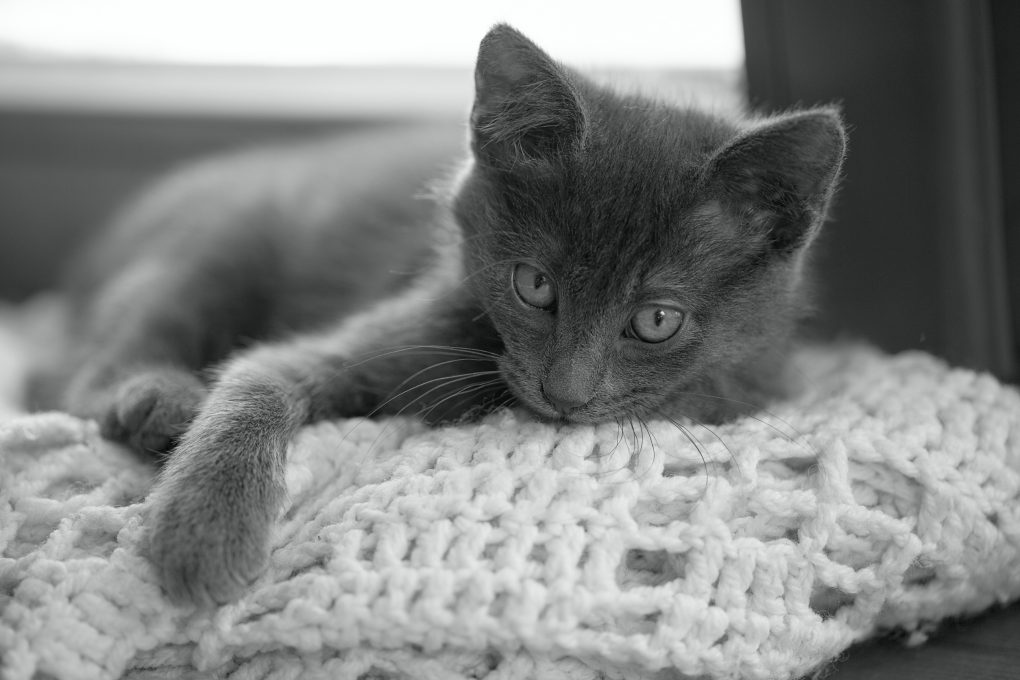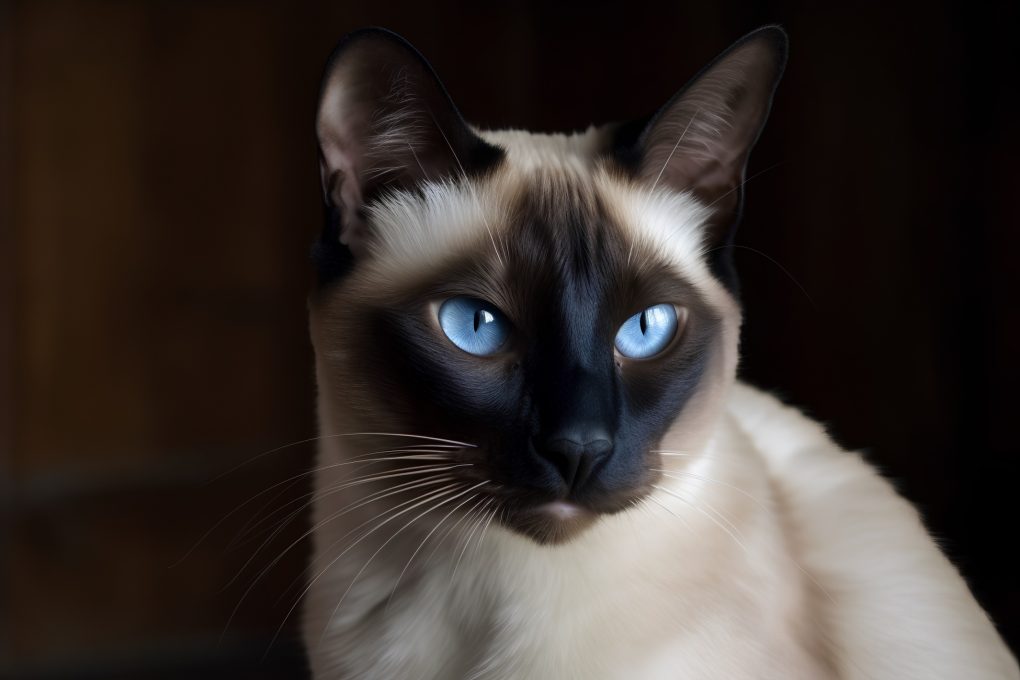Siamese Cat vs. Russian Blue: The Similarities and Differences Between These Cat Breeds
Siamese cats have a distinctive pointed coat pattern, which means their darker fur appears on their face, ears, tail, and paws. They have a slim, elegant build with a triangular head and blue eyes. In contrast, Russian Blue cats have short, thick fur, typically blue-gray, bright green eyes, a more muscular build, and a rounder head than Siamese cats.
Siamese cats have vocal natures and affectionate personalities. They love being around people and often follow their owners around the house. They are also highly intelligent and can be trained to perform tricks. Meanwhile, Russian Blue cats are more reserved and shy around strangers but are loyal to their owners and form strong bonds with them. They are also intelligent and playful, but they tend to be quieter.


Table of Contents
Similarities Between Siamese and Russian Blue Cats
Affectionate
Siamese cats are very social and outgoing and are known to form strong attachments to their humans. They crave attention and love to be in the company of their owners and are “dog-like” in their loyalty and devotion to their humans. Siamese cats are also known for their playful and energetic personalities, and they enjoy spending time with their owners playing games and exploring their surroundings.
Similarly, Russian Blue cats are known for their affectionate personalities and close relationships with their owners. Although they can be shy or reserved around strangers, they form strong bonds with their humans and are loyal and devoted.
Russian Blue cats are often described as “lap cats” and enjoy snuggling up with their owners for a cuddle, but they may not be as high-energy as Siamese cats.
Both Siamese and Russian Blue cats thrive on attention and affection from their humans, and they make wonderful pets for people looking for a companion animal that will be loving, playful, and loyal.
Playful
Siamese cats are highly energetic and playful and need plenty of physical and mental stimulation to keep them happy and healthy. They are known to be very curious and love to explore their surroundings, which makes them great at playing interactive games with their owners. Siamese cats also enjoy chasing toys, playing hide and seek, and even playing fetch. They are highly intelligent and can quickly learn new tricks. There are many best toys for Siamese cats you can choose from.
Similarly, Russian Blue cats are known for their playful personalities and love of games and toys. Although they may not be as high-energy as Siamese cats, they still enjoy playing and need regular exercise and mental stimulation. Russian Blue cats enjoy chasing toys, playing with balls or string, and even playing in the water. They are also highly intelligent and can learn new games and tricks quickly.
Siamese and Russian Blue cats thrive on playtime and interacting with their owners. Regular play sessions can help keep them physically and mentally healthy and strengthen the bond between the cat and the owner. Both breeds also benefit from having access to scratching posts and other toys that can help keep them entertained and stimulated when their owners are not available to play with them.
Intelligent


Siamese cats are highly intelligent; they are curious and love to explore their surroundings, and their high energy level means they are always looking for ways to stay entertained. Siamese cats are quick learners and can easily learn new tricks and behaviors.
They also have a good memory and can remember the routines and habits of their owners. Siamese cats are also known for their vocalization and ability to communicate with their owners, adding to their intelligence and adaptability.
Similarly, Russian Blue cats are also highly intelligent and curious. They are known for their problem-solving skills and ability to adapt to new situations. Russian Blue cats are very observant and aware of their surroundings, which helps them to learn quickly and pick up on cues from their owners. They are also very trainable and can be taught to perform tricks or behaviors.
Siamese and Russian Blue cats are highly intelligent and adaptable breeds that thrive on mental stimulation and problem-solving. They are quick learners and have excellent memories, which makes them easy to train and adaptable to new situations. Their high level of intelligence also makes them excellent companions, as they can learn to communicate with their owners and respond to their needs.
Good With Children
Siamese cats are very social and outgoing and are known to form strong bonds with their humans. And are also very playful and energetic, which makes them great companions for children.
They are usually good with children as long as they are treated with respect and kindness. They can tolerate children and their playful antics, but supervising interactions is important to ensure the cat is not overwhelmed or frightened.
Similarly, Russian Blue cats are gentle and affectionate, which makes them great pets for families with children. They are loyal and devoted to their humans and enjoy spending time with their families. Russian Blue cats are usually good with children as long as they are treated with kindness and respect. They can be patient and tolerant of children and enjoy snuggling up with them for a cuddle.
Both Siamese and Russian Blue cats can be good with children, but it’s important to remember that all cats are individuals and have their personalities and preferences. Supervising interactions between children and cats and teaching children how to interact with cats gently and respectfully is important. It’s also important to provide cats with a safe and comfortable space to retreat if they feel stressed.
Differences Between Siamese and Russian Blue Cats
Coat
Siamese cats have a short, fine coat that is smooth and glossy. The coat is usually tight to the body, which gives Siamese cats a sleek and elegant appearance. The coat comes in various colors, including seal, chocolate, blue, and lilac, and is characterized by darker “points” on the face, ears, tail, and paws. The rest of the body is lighter, creating a striking contrast.
Russian Blue cats also have a short, dense coats characterized by a plush, velvety texture. The coat is usually described as thicker and softer than the coat of other short-haired cats, giving Russian Blues a luxurious appearance. The coat is a uniform blue-gray color that is sometimes described as having a silvery sheen, which creates a striking contrast against the cat’s bright green eyes.
In terms of grooming, both breeds have relatively low-maintenance coats that require only occasional brushing to remove loose hair and keep the coat looking healthy. However, because the texture of their fur is different, Siamese and Russian Blue cats may require slightly different grooming techniques to keep their coats looking their best.
Body Type


Siamese cats are medium-sized with long, lean bodies and distinctive wedge-shaped heads. They have long, slim legs and a long, tapering tail. Siamese cats have a muscular and athletic build, which reflects their active and playful personality. The breed is known for its striking appearance, with sleek lines and elegant curves that give them a regal appearance.
Russian Blue cats, on the other hand, have a more rounded body type. They are a medium-sized breed but have a more stocky build than the Siamese. They have broad, rounded heads with wide-set ears and bright, vivid green eyes. Russian Blues have short, thick necks, and their body is compact and muscular, with a broad chest and a short, dense tail.
Vocalization
Siamese cats are extremely vocal. They have a loud, piercing voice and are not shy about using it to communicate with their owners. Siamese cats are very social and love attention, and their vocalizations often express their desire for interaction and affection. They can be very demanding and will meow loudly until they get what they want.
Russian Blue cats, on the other hand, are not as vocal as Siamese cats. While they do make sounds, they are much quieter and more reserved. They tend to communicate more through body language, such as head-butting, purring, and rubbing against their owners. They may make soft, chirping sounds to express contentment or greet their owners, but they are less likely to meow loudly or demand attention.
